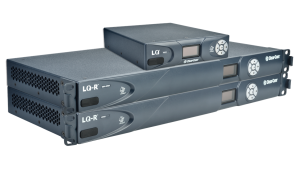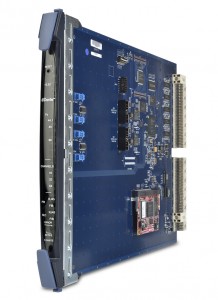SVG Europe Sit-Down: Clear-Com’s Nicki Fisher on Trilogy acquisition and remote production innovation
Clear-Com, which was set up in 1968, was the first to market portable wired and wireless intercom systems for live performances. Alongside the broadcast market, the company – which is a subsidiary of HM Electronics (HME) – serves live events, sports, military, aerospace and government sectors.
In 2016, HME completed the acquisition of UK-based Trilogy Communications through its subsidiary Clear-Com. Clear-Com said the move meant more cutting-edge, cost-effective video and audio infrastructure had been added to the existing industry-proven technologies.
So, it was with that significant move in mind that we started our conversation with Clear-Com sales director Nicki Fisher.
Last year saw Clear-Com’s acquisition of Trilogy Communications. What difference has that made to your operations?
As expected, this important acquisition has strengthened our presence in the broadcast market and accelerated our penetration of the defence and industrial business sectors. Together, Clear-Com and Trilogy Communications now have the broadest range of specialist, knowledgeable partners to extend our reach selling and supporting intercoms solutions and master sync reference generators worldwide. For the first time at BVE, the sales team jointly exhibited the Clear-Com and Trilogy Communications complete portfolio of solutions.
How has the increasing use of remote sports production impacted on Clear-Com product range?
Many large OB trucks previously at events have been replaced with lower cost, more efficient production solutions, where only partial equipment and personnel are required to be on the actual site. Therefore, remote connectivity is absolutely critical, and we have designed and built connectivity products like LQ with this in mind. LQ provides the user the ability to connect 4-wire or partyline audio with call signalling over IP networks. It also provides IP connectivity to our flagship Eclipse Matrix Intercom system via the IVC-32 card in the matrix. In addition, it provides 4-wire with GPIO, triggering network events from a call signal and up to 20kHz high quality audio for data rates up to 128kbps.
Apart from a shift to IP, have the demands of broadcasters and production companies changed in recent times when it comes to your solutions?
Alongside the move to IP, we have seen a significant increase in the need to support a large variety of wireless requirements at broadcasters’ facilities and production companies. Following regulation of some UHF frequency bands, this has resulted in more users seeking suitable solutions in the 1.9GHz or 2.4GHz range. As a result, we have seen phenomenal success with the award-winning FreeSpeak II, which has become the industry system of choice for wireless applications. Over the past 12 months, we have deployed FreeSpeak II in broadcast studios covering a wide range of programming including sports and news, home shopping channels, cooking shows, and film and TV awards ceremonies.
We have also seen a large uptake in the use of the mobile client Agent-IC which allows IOS and Android devices to operate as mobile clients for Eclipse-HX matrixes, providing a remote panel to access over Wi-Fi, 3G and LTE networks.
BVE 2017 saw the introduction of the new Dante interface card for its Eclipse-HX matrices. What drove this development and what are the benefits to users?

The LQ family enables remote IP connections to the matrix, allowing users to link 2-way radios over any IP network connection
The market cried out for a ubiquitous plug-and-play AoIP (Audio over Internet Protocol) interconnect technology which is compatible with IP infrastructure. Audinate responded with Dante technology that meets these requirements and more. Today, Dante is the fastest-growing and most widely-adopted AoIP technology in the world.
The E-Dante card offers high channel density with a total of 64 channels per card which is offered at a flat pricing, meaning that there are no hidden costs downstream. It also offers Primary and Secondary interfaces as standard, making IP a resilient ‘glitch free’ audio transport solution. Another key benefit to the user is its ability to ensure tighter integration with other audio equipment by providing automatic updates of intercom channel labels from Dante sources.
Accessories, such as headphones or in-ear receivers, can often take second place to more ‘visible’ solutions. What developments have taken place with these accessories?
Accessories are critically important as when it comes to intercom, as it is the entire user experience that counts! The most recent additions to our headset range are the premium lightweight and durable CC-110 (single ear) and CC-220 (dual ear) headphones. They are comfortable and fully serviceable with interchangeable cable assemblies. With the added advantage of a boom on/off switch and a choice of foam or leatherette ear pads, these new lightweight products offer a no-compromise, high quality experience each and every time.
Is there any particular project that presented interesting challenges?
Sports stadia projects are particularly interesting, especially given the increasing need for wireless for a range of applications from broadcasting to live events and referee systems. It is particularly important to offer a good site survey to ensure placement of antennas for optimum cellular coverage and also to be able to offer a choice of solutions at both 1.9GHz and 2.4GHz depending on the needs of the event and number of beltpack users.
What is your view of the future?
Over the next 12-18 months, we expect our customers to require more IP integration and the ability to remotely produce and deliver more content without having the additional cost of sending huge production crews on site to retrieve it. Intercom over IP networks that also carry standardised audio and video will be in demand, and we will continue to provide for this eventuality. We also see the possibility to leverage these standards to provide more interoperability.



